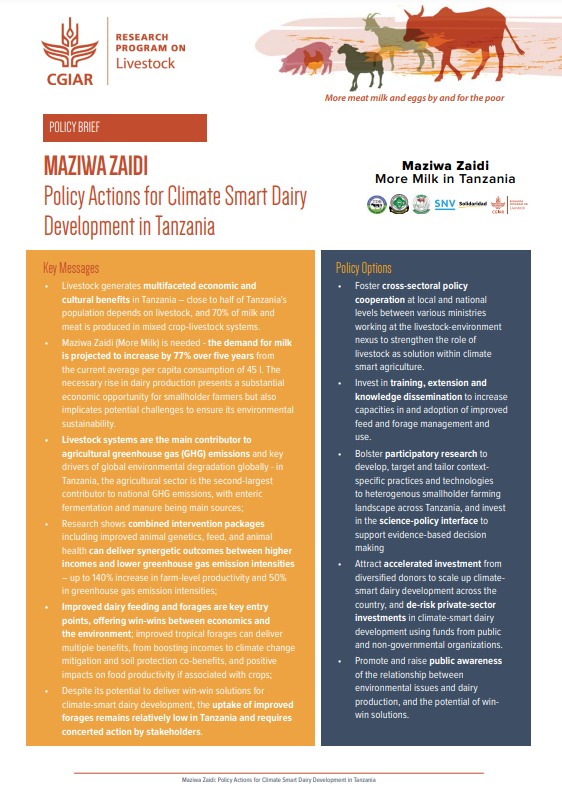Livestock generates multifaceted economic and cultural benefits in Tanzania – close to half of Tanzania’s population depends on livestock, and 70% of milk and meat is produced in mixed crop-livestock systems.
Maziwa Zaidi (More Milk) is needed – the demand for milk is projected to increase by 77% over five years from the current average per capita consumption of 45 l. The necessary rise in dairy production presents a substantial economic opportunity for smallholder farmers but also implicates potential challenges to ensure its environmental sustainability.
Livestock systems are the main contributor to agricultural greenhouse gas (GHG) emissions and key
drivers of global environmental degradation globally – in Tanzania, the agricultural sector is the second-largest contributor to national GHG emissions, with enteric fermentation and manure being main sources.
Research shows combined intervention packages including improved animal genetics, feed, and animal health can deliver synergetic outcomes between higher incomes and lower greenhouse gas emission intensities – up to 140% increase in farm-level productivity and 50% in greenhouse gas emission intensities.
Improved dairy feeding and forages are key entry points, offering win-wins between economics and
the environment; improved tropical forages can deliver multiple benefits, from boosting incomes to climate change mitigation and soil protection co-benefits, and positive impacts on food productivity if associated with crops.
Despite its potential to deliver win-win solutions for climate-smart dairy development, the uptake of improved forages remains relatively low in Tanzania and requires concerted action by stakeholders.
Paul, Birthe K.; Omore, Amos O.; Mwilawa, Angello; Komba, Erick; Notenbaert, An Maria Omer![]()

